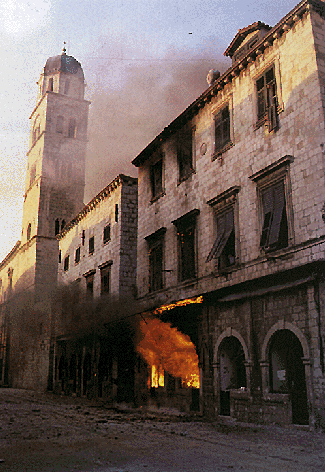
Dubrovnik is one of the oldest and most beautiful Mediterranean towns. Because of its beauty, state of preservation and centuries-old tradition it was placed on the UNESCO Register of World Cultural Heritage in 1979.

Now, after the war imposed in 1991 on the Republic of Croatia by the Yugoslav Army, Dubrovnik is heavily damaged and seriously endangered in its very foundations. Never in its history has Dubrovnik been devastated by man; the only destruction it suffered before 1991 was caused by earthquakes.
From its very beginnings Dubrovnik was a town: it was controlled by human intelligence and creativeness. According to the latest archival findings, Dubrovnik was founded long before the 7th century AD. Its inhabitants painstakingly reclaimed land from the sea and showed great wisdom and a natural sense for dialogue in organizing their living space.
Dubrovnik was a commercial and naval power whose ships sailed to all parts of the globe. With its diplomacy and strong walls it succeeded in preserving its autonomy and freedom as the Republic of Dubrovnik during many centuries, when the rest of Croatia formed part of other states.
Dubrovnik's medieval urban structure developed in keeping with regulations spelled out in a Statute passed in 1272; the city prides itself on numerous architectural monuments dating from various periods, the predominating being Gothic and Renaissance architecture from its golden age, the 15th and 16th centuries. There are also many Baroque buildings as well as remnants from earlier periods. Dubrovnik is a treasure trove of painting, sculpture and applied art, as well as of written documents, kept in the Dubrovnik State Archive, one of the best known in the world.
Dubrovnik is one of the best-known tourist destinations in the world; one of its attractions is the Dubrovnik Summer Festival.
In the aggression on the Municipality of Dubrovnik many people have been killed, the areas of Konavle, Zupa dubrovacka, Rijeka dubrovacka and Dubrovacko primorje have been totally destroyed; over 19,600 persons have been made homeless, the economy of the area has been ruined and 53 per cent of the total area of the Municipality is still occupied by the enemy.
75 per cent of the industrial facilities have been destroyed or damaged, agricultural production has been brought to a complete halt, 90 per cent of the building industry and 40 per cent of all shops have been either destroyed or looted, 60 per cent of the hotels have been damaged or totally destroyed; the communications infrastructure (the airport, the harbour, roads, post offices and telecommunications) has been rendered inoperative; 2,500 family houses and farm buildings have been burnt down, 5,500 buildings have been damaged, many of them seriously; the property in the occupied areas has been largely looted.
According to the estimates based on the available data, the damage inflicted on the Dubrovnik Municipality so far amounts to 2,000,000,000 US$.
Dubrovnik itself is not occupied but it is encircled by the enemy.
It was attacked three times: the first bombing raid was carried out on the 23rd and 24th October 1991, the second between the 8th and 13th November 1991 and the third on the 6th December 1991.
The map of Serbian bombing raids on Dubrovnik in 1991
The third attack was aimed at destroying the historic core of the city: the old city of Dubrovnik. It lasted full 12 hours, during which time over 2,000 missiles were fired at the city within the walls and at its immediate surroundings: grenades, shells and guided missiles. The bombing started many fires in the city, missiles exploded on 700 sites and hit 400 sites without exploding. Stradun alone suffered 43 direct hits.
It has so far not been possible to inspect or estimate the full extent of the damage. The Dubrovnik region is still occupied by the enemy and is inaccessible to expert commissions, so that the report of the Dubrovnik Institute for the Protection of Monuments, published in seven volumes, covers only the damage to the historical nucleus and its immediate surroundings. The report does not include the damage to the municipal infrastructure, the fortifications, and the interiors, nor an analysis of the damaged structural elements of houses. The damage to mobile art objects - invaluable paintings, books and other art objects - has not been included either.
The report on the extent of the damage to Dubrovnik led to the decision in Carthage at the end of 1991 to place the city on the UNESCO Register of Endangered World Cultural Heritage.

Burning house in the famous Stradun street in Dubrovnik
The preliminary damage estimate, prepared by the Institute for the Reconstruction of Dubrovnik while the war operations were still in progress, on the basis of some, but by no means all the elements, provides only an approximate idea of the future reconstruction costs. When the damage that has not been estimated yet is added to the already estimated one, the cost of reconstructing Dubrovnik from the destruction inflicted on it during the 1991 war will be enormous.
The extent of the damage and the professional and organizational problems its repair will involve have prompted the City of Dubrovnik and the Republic of Croatia to call on the international cultural community for help. Many foreign experts are already in the city, which is still encircled, endangered on all sides by the enemy, deprived of the natural links with its hinterland and the rest of Croatia.
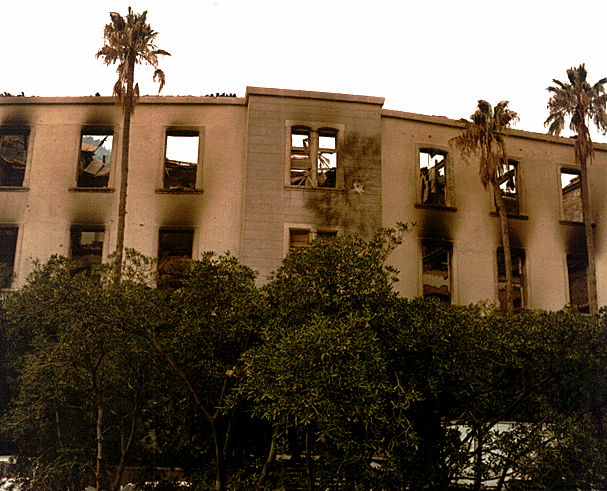
Inter-University Center in Dubrovnik in 1991
Dubrovnik and the Republic of Croatia know that reconstruction will take a long time; they are aware that it will depend on their labour and their determination to preserve the life and traditions of Dubrovnik; they know that the renewal will be carried by the creative power of the people, who are going to rebuild the city and the whole Dubrovnik area with their hands and hearts as our ancestors did in the past (note by E. Sehovic: this picture shows the ruins of the Inter-University Center building, which had been reconstructed already).
You too can contribute to our efforts. Join us! You can help Dubrovnik
restore its beauty. We will appreciate your concern and your contribution.
We would like to have with us all those who believe that the world heritage shows the road to the future of civilization and to the cultural horizon of the old continent - Europe.
Lord Mayor of Dubrovnik
From the Memorial room dedicated to Croatian defineders of Dubrovnik (the room is in the very centre of Dubrovnik, within the Sponza palace). Added by D.Z., 2005.
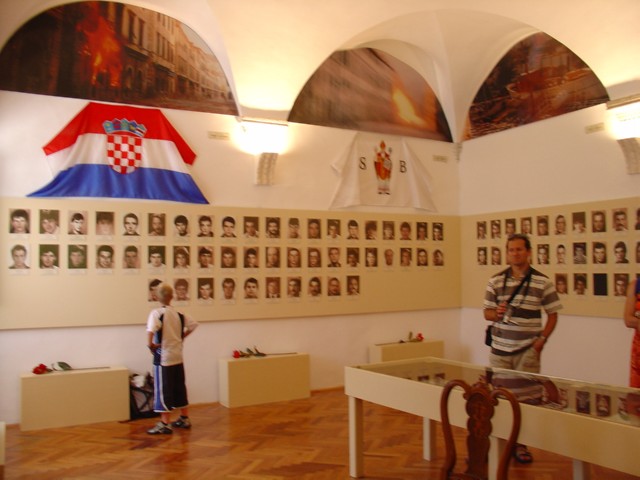
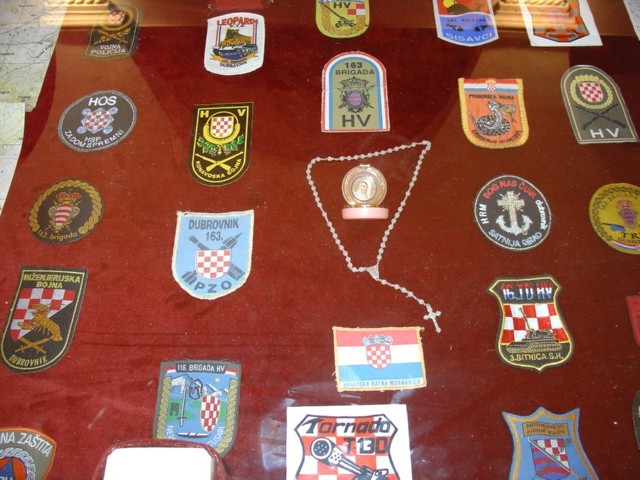
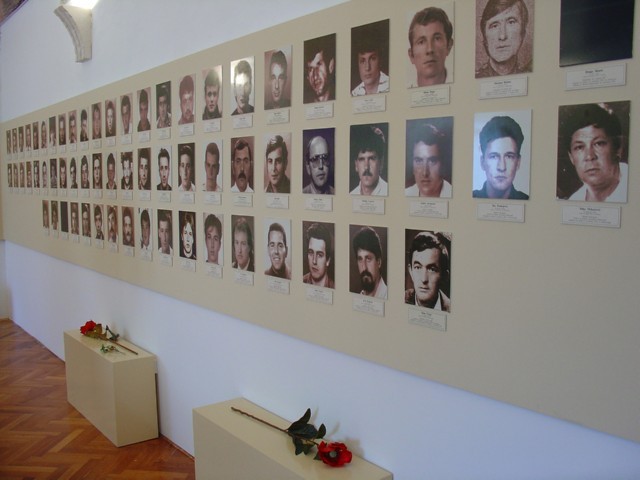
The Palace of Sponza, where the exhibition is placed in a small room, has been lighted worlds famous Agabekov company from Switzerland (and Mr Agabekov has Croatian roots):
Background song: The Roads Come Back to You, by Nenad Bach, on this web with kind permission
Croatian Heroes: Pavo Urban defended Dubrovnik with his camera